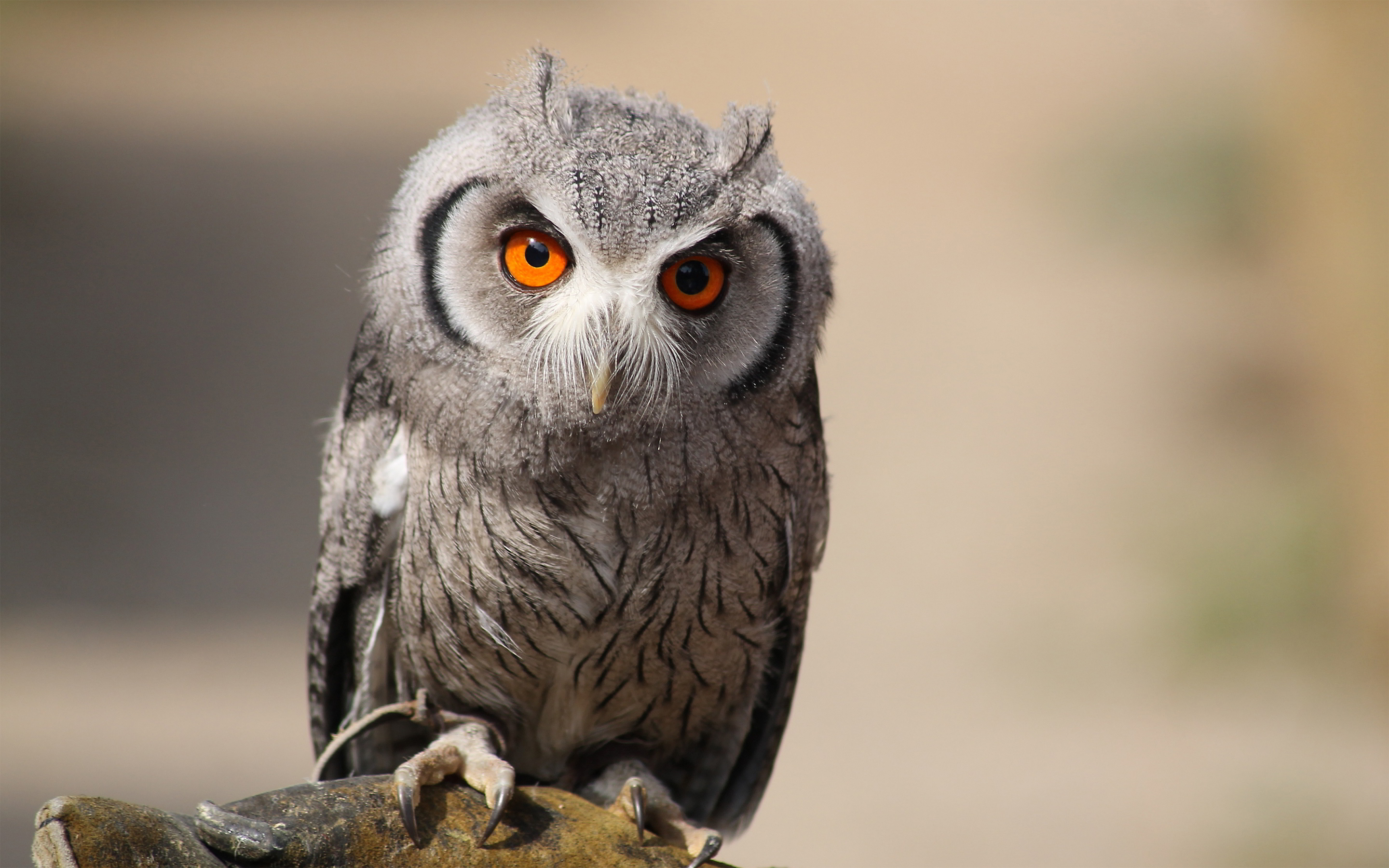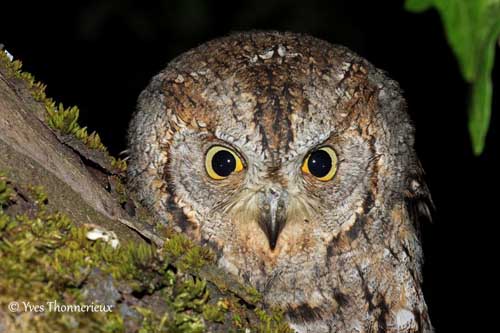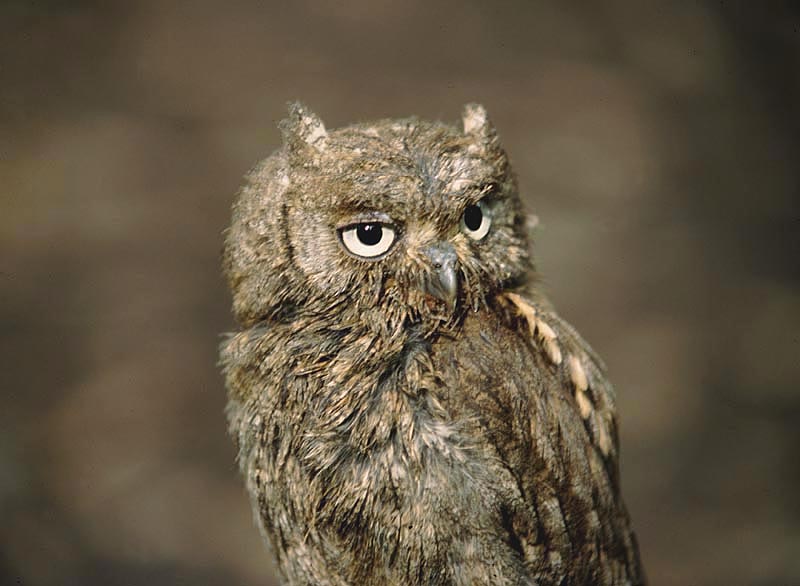
Otus scops
SUBFAMILY
Striginae, Tribe Otini
TAXONOMY
Strix scops Linnaeus, 1758 Italy. Six subspecies are recognized.
OTHER COMMON NAMES
English: European scops-owl, common scops-owl; French: Petit-
duc scops; German: Zwergohreule; Spanish: Autillo Europeo.
PHYSICAL CHARACTERISTICS
6.3–7.9 in (16–20 cm); 2.1–4.8 oz (60–135 g). Both gray-brown
and rufous-brown color phases occur. Head features a gray facial
disc, darker around the yellow eyes, and small ear tufts.
Upperparts are gray-brown to rufous-brown with dark streaks,
bars, and lines. Underparts are lighter brown to buffish white
with dark streaks, bars, and lines. Buffish white leg feathers and
gray feet.
DISTRIBUTION
France, and all Mediterranean countries to northern Turkey;
Volga River east and to Lower Baikal, Altai and Tien Shan;
Iberia, Balearic Islands and North Africa; southern Asia Minor,
Jordan and Israel and onto northwest Pakistan.
HABITAT
Prefers open, rather than dense, woodland, including woodland
parks in towns, plantations, and scrubland.
BEHAVIOR
Northern birds are mostly migratory, while the southern birds
are more sedentary. Migratory birds travel to Africa to winter.
This owl is largely nocturnal, but occasionally is active during
the day.
FEEDING ECOLOGY AND DIET
Mainly insectivorous; crickets and grasshoppers form much of
its diet. Prey is taken by a short pounce from a perch or sometimes
these owls will run after prey on the ground.
REPRODUCTIVE BIOLOGY
Nests in cavities, using tree cavities or holes in walls and old
buildings. Lays two to six eggs. Incubation is generally 24–25
days. Young fledge at about 30 days and are cared for by their
parents for about five weeks.
CONSERVATION STATUS
Not globally threatened, or considered rare. Locally common
in parts of its range.
SIGNIFICANCE TO HUMANS
None known.
Other popular Animals
Photo Gallery of - Eurasian scops-owl




 Animalia Life
Animalia Life